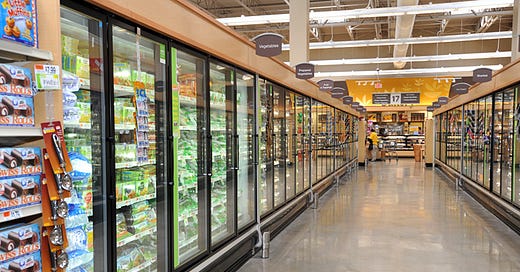Food Deserts: Connection to Urban Planning in America
A little background of food deserts and how they relate to how cities are planned in America specifically.
The planning of American towns and cities have a lot to do with the occurrence of food deserts.
Access to healthy and nutritious food is necessity for all. However, in many areas across America "food deserts" are found. Food deserts are areas where residents have limited access to affordable, fresh, and healthy food options, often resulting in poor diets and negative health outcomes.
Food deserts are typically characterized by a lack of good full service grocery stores within a reasonable distance from a person’s home. Instead, these areas are often full of fast-food restaurants, convenience stores, and other stores that primarily offer foods with low nutritious value. In most cases, the people most affected by food deserts are in living in low-income neighborhoods that have limited to no transportation options.
Poverty plays a significant role in the creation of food deserts. Low-income communities often lack the financial resources to support full service grocery stores, making them less attractive to potential retailers to open them in low-income areas. Food deserts are disproportionately found in communities of color, which directly reflects historical patterns of systemic racism and redlining in cities. These communities have faced discriminatory practices that limited their access to essential resources
Urban planning decisions, such as zoning regulations, walkability, and transportation can contribute to the emergence of food deserts. Zoning regulations that do not encourage or support grocery store development can cause a food desert. Positive zoning that encourage things like urban farming and density can help elevate food deserts. In many cities across America it is a challenge for people to walk to grocery stores. Cities can often lack proper sidewalks and crossings that support walking. Without proper transportation from homes to grocery stores, it can be a challenge to access healthy groceries. Infrequent or non existent transportation is a large factor of people not being able to access full service grocery stores.
A big consequence of food deserts are the health disparities for all living in them. People living in food deserts are more likely to suffer from all of the prevalent health conditions related to diet from people that have easy access to healthy foods.
There are ways that can help alleviate food deserts from a planning standpoint. Working with residents living in food deserts when making planning choices in their community can help make the place a better place to live for the people living there. Planning to improve transportation can be very helpful for people to be able to easily reach full service grocery stores. Encouraging grocery stores to open through incentives can also greatly help the root issue.
Food deserts are a deep-rooted issue, urban planning plays a vital role in their creation and potential solutions. Addressing food deserts requires a concerted effort from governments, communities, and businesses to prioritize equitable access to healthy food options for all residents. By implementing targeted urban planning policies America can help eliminate food deserts and improve public health.
Thank you!!!
-Brody (Urbanismo)






